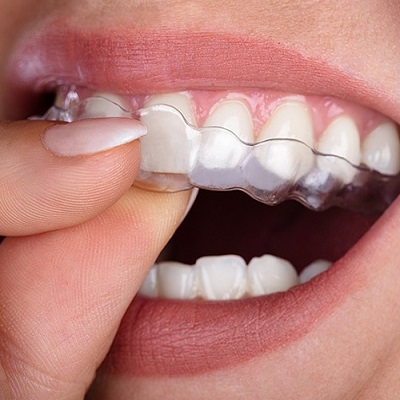Mouthguards are essential for protecting your teeth and gums during sports and other activities, but they can sometimes present issues. Proper maintenance and troubleshooting can ensure they remain effective and comfortable. Here’s a guide to help you address and resolve common Mouthguards Clinic Dubai..
1. Mouthguard Doesn't Fit Well:
Issue: A poorly fitting mouthguard can be uncomfortable and may not provide adequate protection.
Troubleshooting Steps:
Check the Fit: If using a stock or boil-and-bite mouthguard, ensure it covers all your teeth and doesn’t move excessively. If it’s too loose or too tight, it may need adjustment or replacement.
Re-Mold if Necessary: For boil-and-bite mouthguards, follow the manufacturer’s instructions to reheat and remold the mouthguard. Ensure it fits snugly but comfortably.
Consider Custom Options: If problems persist, a custom-fitted mouthguard from a dental professional may provide a better fit and enhanced comfort.
2. Mouthguard Causes Discomfort:
Issue: Discomfort can arise from the mouthguard’s fit, material, or design.
Troubleshooting Steps:
Check for Proper Fit: A well-fitting mouthguard should not cause pain. If it does, it might be too tight or not molded correctly. Adjust or remold as needed.
Material Sensitivity: Some materials may cause irritation or allergies. If you suspect this, consider switching to a different material or consult your dentist for alternatives.
Adjust for Braces: If you have braces, make sure your mouthguard is specifically designed to accommodate them. Custom orthodontic mouthguards are usually more comfortable for people with braces.
3. Mouthguard Impairs Breathing or Speech:
Issue: A mouthguard that obstructs breathing or makes it difficult to speak can be problematic.
Troubleshooting Steps:
Choose the Right Type: For high-impact sports, a thicker mouthguard may provide better protection but could affect speech. Consider using a thinner mouthguard if speech is a major concern.
Ensure Proper Fit: A well-fitted mouthguard should not block your airway or interfere with your ability to speak clearly. Check the fit and make adjustments if needed.
Practice Speaking: If the mouthguard is new, it may take some time to adjust. Practice speaking and breathing with the mouthguard in place to get used to it.
4. Mouthguard is Too Bulky:
Issue: A bulky mouthguard can be uncomfortable and cumbersome during activities.
Troubleshooting Steps:
Select a Suitable Type: Consider a thinner or less bulky mouthguard if comfort is a major issue. Custom-fitted and dual-density options can offer a balance between protection and bulkiness.
Check for Proper Fit: Ensure the mouthguard isn’t excessively large. A custom-fitted mouthguard is usually designed to be less bulky and more comfortable.
Evaluate the Design: Some mouthguards are designed for specific sports and may be bulkier for added protection. If bulk is a concern, consult with your dentist for a more streamlined option.
5. Mouthguard Has a Bad Odor:
Issue: Bad odor can develop due to bacteria or improper cleaning.
Troubleshooting Steps:
Regular Cleaning: Rinse your mouthguard with cool water and brush it with a toothbrush and mild soap after each use. Avoid using hot water as it can warp the material.
Disinfect Regularly: Use mouthguard cleaning tablets or a mixture of baking soda and water to disinfect and deodorize. Make sure to rinse thoroughly after cleaning.
Proper Storage: Store your mouthguard in a ventilated case to prevent moisture buildup and bacterial growth. Avoid leaving it in a hot environment.
6. Mouthguard is Warped or Damaged:
Issue: Warping or damage can affect the mouthguard’s effectiveness and fit.
Troubleshooting Steps:
Inspect Regularly: Regularly check for signs of wear and tear. If the mouthguard appears cracked, warped, or otherwise damaged, it may need to be replaced.
Avoid Hot Conditions: Keep the mouthguard away from hot water, sunlight, and other sources of heat that can warp the material.
Replace as Needed: If damage is severe, replace the mouthguard. Regular replacement ensures optimal protection and comfort
7. Mouthguard Causes Gagging:
Issue: A mouthguard that triggers a gag reflex can be uncomfortable and disruptive.
Troubleshooting Steps:
Choose a Smaller Size: If a large mouthguard causes gagging, consider a smaller or less bulky option that still provides adequate protection.
Gradual Adjustment: Wear the mouthguard for short periods to get used to it. Gradually increasing the duration can help reduce the gag reflex.
Consult a Professional: If gagging persists, consult with a dentist. They can recommend a custom mouthguard designed to minimize gagging.
8. Conclusion:
Addressing common mouthguard issues involves checking the fit, material, and maintenance. Regular inspection, proper cleaning, and choosing the right type of mouthguard for your needs are essential for ensuring effective protection and comfort.





Comments